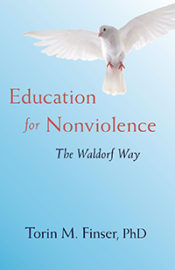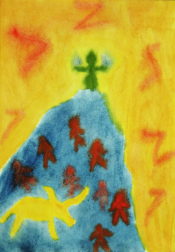 Everything a Teacher Needs
Everything a Teacher Needs Roadmap to Literacy Books & Courses
Roadmap to Literacy Books & Courses Association for a Healing Education
Association for a Healing Education Quality Education in the Heartland
Quality Education in the Heartland Flexible preparation for your new grade
Flexible preparation for your new grade Bay Area Teacher Training
Bay Area Teacher Training
 Summer Programs - Culminating Class Trips
Summer Programs - Culminating Class Trips Transforming Voices Worldwide
Transforming Voices Worldwide Jamie York Books, Resources, Workshops
Jamie York Books, Resources, Workshops Waldorf Training in Australia
Waldorf Training in Australia Train to Teach in Seattle
Train to Teach in Seattle Immersive Academics and Arts
Immersive Academics and Arts ~ Ensoul Your World With Color ~
~ Ensoul Your World With Color ~ Bringing Love to Learning for a Lifetime
Bringing Love to Learning for a Lifetime Full-Time Teacher Education
Full-Time Teacher Education Great books for Waldorf Teachers & Families
Great books for Waldorf Teachers & Families Space speaks. Its language is movement.
Space speaks. Its language is movement. Waldorf-inspired Homeschool Curriculum
Waldorf-inspired Homeschool Curriculum Caring for All Stages of Life
Caring for All Stages of Life The Journey is Everything
The Journey is Everything Middle School Science With Roberto Trostli
Middle School Science With Roberto Trostli Apply Today: New Cohort Starts Nov. 2025
Apply Today: New Cohort Starts Nov. 2025
Would you like to become a sponsor?
Waldorf News

How do I Find and Create Goodness for My Children?
October 16, 2017
In difficult times such as these with environmental disaster of almost unprecedented scale and concern about friends and others in Japan at the forefront of our thoughts, it is not easy to feel the goodness in life. In an external crisis, our urge is often to listen and see the news and to share our feelings with other adults. As a consequence, it is easy for the children around us to be exposed to things that they cannot understand, to become fearful about situations they will never see and cannot change even if we think that the media or adult conversations are not attended to by the children. Even pre-verbal children can sense profoundly the distress in our inner being. But nothing brings stamina for life and daily well being to our children more directly and strongly than surrounding them and immersing them into an atmosphere of goodness and joy. For us as adults, the message they seek from us is this: I am happy to be alive, I am interested in the world around me and I want to find a place for myself within it. Children are born with an openness to meet what their lives will bring. Despite their individual destinies and challenges, this openness is present and as the adults in the child’s world, we have tremendous potential to cultivate this openness. More »

Education for Nonviolence: The Waldorf Way By Torin M. Finser, PhD
October 10, 2017
In a world of increasing violence and destruction, many parents and educators are asking, “How can we raise children with the resilience needed to face such challenges? How can we help our children become confident and compassionate contributors in society?” In his new book, Education for Nonviolence: The Waldorf Way, Dr. Torin Finser examines the source of evil and terror, identifying its root within the human soul. If human nature has the capacity for both goodness and evil, Dr. Finser argues that educators and parents must be concerned with educating not just the intellect of each child, but the entire soul. He describes, “In this case, the source of evil is in the human soul, the psyche, the inner life of a person. The life of emotions, of anger, fear, and envy are real forces that work their way outward from within. If one is to get at the root of evil, one has to begin with the soul” (21). In Waldorf Schools, teachers loop for many years with their classes, providing an opportunity for the teacher to know his/her students more deeply. In striving to see each child holistically, teachers are able to deliver instruction that meets the specific needs of each child. More »

What Would Steiner Say… About Painting with Children?
October 2, 2017
If Rudolf Steiner walked into a Waldorf school painting class today, what might he notice, and what might he say? (I don’t wish to offend anyone who believes I’m being impertinent by putting words in Steiner’s mouth, but my intention, through reference to what Steiner is recorded to have said, and also to what there’s no record of him ever saying, is to make more immediate what would otherwise be dry.) Q. What about all that wet-on-wet watercolor painting? A. Believe it or not, I never said anything about that! I only said that the paint should be liquid. Yes, it’s a way to keep the paper flat and to have the colors bump up against one another in a beautiful way, but it’s not necessary, and it’s certainly not something to carry on year after year through elementary school. Q. What about paintings of one color only? A. Again, I never said anything about that! Why limit the children’s experience? Is this a meeting of German rectitude and American Puritanism? That’s not what I intended! I spoke about individual colors, of course, but every reference that I made to a painting exercise for children concerns at least two colors; a comparison, a contrast that can give rise to a feeling in a child’s soul. Don’t confuse the theoretical with the practical! And don’t confuse my esoteric lectures for adults with my recommendations for teaching children. More »

The shorter your sleep, the shorter your life: the new sleep science: Leading neuroscientist Matthew Walker on why sleep deprivation is increasing our risk of cancer, heart attack and Alzheimer’s – and what you can do about it
September 25, 2017
Matthew Walker has learned to dread the question “What do you do?” At parties, it signals the end of his evening; thereafter, his new acquaintance will inevitably cling to him like ivy. On an aeroplane, it usually means that while everyone else watches movies or reads a thriller, he will find himself running an hours-long salon for the benefit of passengers and crew alike. “I’ve begun to lie,” he says. “Seriously. I just tell people I’m a dolphin trainer. It’s better for everyone.” Walker is a sleep scientist. To be specific, he is the director of the Center for Human Sleep Science at the University of California, Berkeley, a research institute whose goal – possibly unachievable – is to understand everything about sleep’s impact on us, from birth to death, in sickness and health. No wonder, then, that people long for his counsel. As the line between work and leisure grows ever more blurred, rare is the person who doesn’t worry about their sleep. But even as we contemplate the shadows beneath our eyes, most of us don’t know the half of it – and perhaps this is the real reason he has stopped telling strangers how he makes his living. When Walker talks about sleep he can’t, in all conscience, limit himself to whispering comforting nothings about camomile tea and warm baths. It’s his conviction that we are in the midst of a “catastrophic sleep-loss epidemic”, the consequences of which are far graver than any of us could imagine. More »

Playing “Steiner Says”: Twenty-two Myths about Waldorf Education
September 18, 2017
To begin, two stories. During my first year or two of teaching, our faculty meeting enjoyed the presence of two eminent European Waldorf teachers. My recollection is that one came from the U.K. and one from Germany, but that doesn’t matter. One appeared in the fall and one in the spring. The first, answering a colleague’s question, said, “You should never use tongue-twisters; they trivialize language.” Heads nodded. The second, also in response to a colleague’s question, replied, “Of course, the best possible thing for that is to recite tongue twisters with your class.” Heads nodded again. And there we were, back where we belonged, on our own recognizance. Two experts, two apparently contradictory points of view. Presumably, both were based on considered interpretations of Steiner’s work. Years later, just when I thought I would be moving on to university teaching, I found myself happily teaching a seventh grade. An otherwise bright girl, who later graduated high in her prep school class, could not multiply or divide fractions. I asked her why not. Her reply: “Because, whenever I try, I just see gnomes dancing and spinning on the page.” What? Somehow I had managed to teach in Waldorf schools for nearly twenty years without encountering “math gnomes,” and their relatives, including “King Plus” and “Queen Minus.” I had read Rudolf Steiner and Hermann von Baravalle on teaching math, and had no recollection of these gnomes or anything like them. It occurred to me that a lot of what we do in Waldorf schools each day—and sometimes have to explain or defend to colleagues or parents—has little or no basis in Steiner’s work. I’ve since said, seriously, that gnomes have better work to do than to teach little boys and girls about arithmetic operations. More »
 Recent Jobs
Recent Jobs
View more jobs »
 Newsletter Archive
Newsletter Archive
 Join the Mailing List!
Join the Mailing List!
Stay Connected…
Each week receive the Waldorf News Weekly Update, full of news, events, and more. Keep abreast of what's happening with Waldorf education.
 RSS Feeds
RSS Feeds